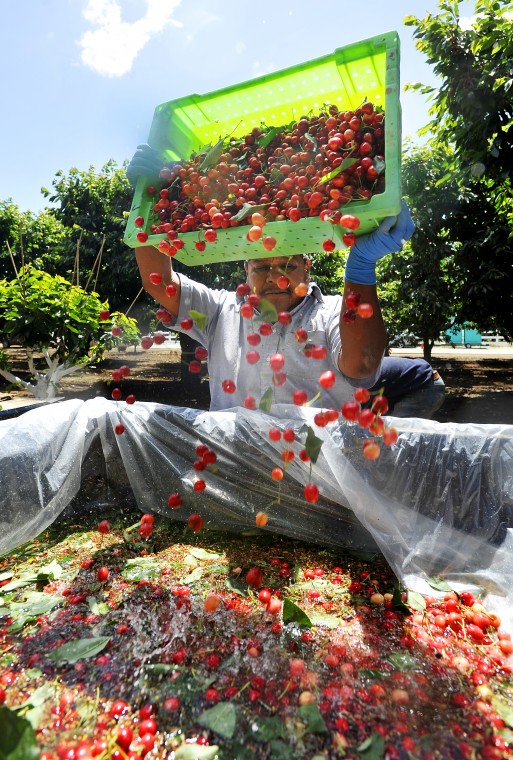
Boosted by big increases in vegetable production, San Benito County’s agriculture industry earned record revenues in 2013 and eclipsed $300 million in value for the first time.
The San Benito County Agriculture Commissioner’s Office on Tuesday released the 2013 crop report. It includes acreage and value figures for all agriculture production in the county.
Despite the continued drought – it is in year three now – the county last year reported gross production values of $330 million. That was nearly $33 million more than the prior year, or an 11 percent gain year over year, according to figures in the report.
The vegetable category once again led the way in the county, with $225.7 million in production coming from those crops. That was an increase from $207.8 million in vegetable values in 2012, according to the report.
As a whole, field and orchard crops were the biggest gainers. The cattle industry also did well despite the poor weather conditions. Higher prices more than offset the loss in production, Agriculture Commissioner Ron Ross said Tuesday.
“It was primarily field and orchard crops,” Ross told county supervisors during their Tuesday meeting.
Ross noted some of the biggest gains were from spinach, head lettuce and onions, while cherries, apricots, walnuts and other vine crops did well, too.
Walnuts stood out in particular, he said, largely due to increased prices.
“Lately the walnut market has been very good to producers,” Ross said.
While walnut acreage actually decreased from 1,582 to 1,574 year over year, the gross value increased from $2.93 million to $4.73 million – or an astounding 62 percent gain.
Ross attributed the increase in price to a simple spike in demand.
“There seems to be an increasing trend in consumers to buy walnuts, primarily due to the health aspect,” Ross said.
The report itself got a bit healthier as well. For the first time, the agriculture department added a page specific to organic farming. It showed another increase in organic production in a county with a wide variety of producers, large and small.
Previously, the department listed just the number of producers and acreage. The number of organic growers increased from 67 to 76, while the acreage numbers don’t compare because the office used organic rangeland for the first time this year in the acreage count, Ross said.
Also for the first time, the office displayed a total value for organic crops – $81 million in 2013, or about 25 percent of all county crop values, signaling continued momentum for that group.
The office included a feature this year in comparing the numbers from today with those of 50 years ago, when cattle, apricots and tomatoes were the three top crops. As a whole, Ross pointed out that total values back then were at $24 million. Adjusting for inflation, that’s equivalent to about $156 million in today’s dollars. He said using those numbers, the agriculture industry has not only kept up over the years, but also more than doubled in values.
“It’s maybe twice as important as it was 50 years ago,” Ross said.
The county board had to approve the report so the office could release it to the public. Supervisor Anthony Botelho, an apple orchardist, was happy with the information.
“I really appreciated the inclusion of what things looked like 50 years ago and how agriculture changes,” Botelho said.
Look back for more. Read the full crop report at left.









